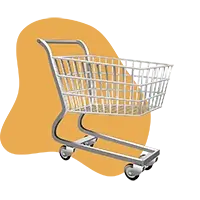Adapted from the master's thesis of Xavier Champoux, with modifications by Bofu.
In the online advertising space, multiple channels offer distinct strengths and weaknesses. To understand these advantages and disadvantages, it is essential to collect data effectively. However, even with all the necessary data, without the use of key performance indicators (KPIs), this data remains just numbers without added value. It is therefore essential to set up the right KPIs to derive actionable results from the collected data. The existence of different campaigns (search campaigns, social media campaigns, display campaigns, etc.) and varied objectives (brand awareness, customer acquisition, etc.) means that companies must use multiple KPIs to evaluate the effectiveness of their campaigns.
Conversion rates: an essential KPI
Conversion rate is a key KPI for analyzing the results of an advertising campaign. It is calculated by taking the number of conversions and dividing it by the total number of interactions with the ads. Although conversion rates can vary by industry, they offer a clear indicator of the effectiveness of a campaign by understanding where we are in the funnel and what constitutes this conversion.
Additionally, techniques such as cross-selling and up-selling are often used in online advertising, especially just before conversion. These techniques, used by companies like Amazon, aim to increase the value of each transaction. Cross-selling involves offering complementary items to the initial purchase, while up-selling involves offering the customer the option to purchase a more expensive or better version of the item.
Display advertising: increasing visibility throughout the customer journey
Varied and scalable formats
Display advertising includes banners, images, texts, etc., displayed on various platforms, websites, or apps. There is a wide range of display ads, including classic banners, native ads, animations, interactive content, videos, infographics, and much more.
Unlike traditional formats, native ads are integrated directly into the content feed, rather than outside of it. While native ads typically generate higher click-through rates, they may have a lower impact on brand recognition.
Over time, display ads have evolved to become more intrusive and harder to ignore, particularly with the addition of audio and video features. However, many users now block ads using specialized programs, making it difficult to collect accurate data. That said, display advertising remains a staple of online advertising.
A significant impact at the start of the customer journey
Display ads are particularly effective in the early stages of the customer journey. Simply being exposed to them can prompt consumers to seek out additional information about a brand or product, increasing their purchase intent. Additionally, prolonged exposure to display advertising increases the likelihood that customers will visit the advertiser’s website.
However, the phenomenon of “banner blindness,” where users actively ignore banner ads, has reduced their response rate. In today’s digital age, where users’ attention spans are increasingly fragmented, it is crucial for marketers to adapt their campaigns to capture attention quickly and effectively.
Search Engine Advertising: Precise Targeting
What is search advertising?
Search engine advertising, also known as SEM (Search Engine Marketing), involves bidding on keywords to display ads based on user queries on search engines. This type of advertising is particularly effective because it directly targets users who are actively searching for information, products, or services.
Benefits and Challenges of SEM
Search advertising provides valuable consumer insights, such as geolocation, time of day, and products clicked on. This helps marketers make more informed decisions and optimize future campaigns. However, it’s important to note that sometimes the users who click on these ads are loyal customers who would have visited the site through other channels anyway. So while SEM is a great conversion tool, it’s essential to analyze the data carefully to avoid wrongly attributing conversions that have already been acquired.
SEO and organic search: improve your ranking naturally
Search Engine Optimization (SEO)
Organic search, often perceived as “free,” allows a site to appear in non-sponsored search results. However, to maximize its impact, SEO (Search Engine Optimization) must be optimized. While SEO does not require keyword purchases, it does have hidden costs, including hiring SEO consultants, optimizing the website, and creating relevant content.
Factors that influence a site's ranking include crawler accessibility, content quality, optimized keywords, and user experience. A well-executed SEO strategy not only improves organic rankings, but also conversion rates.
Social Media Advertising: Reaching Users Where They Are
Paid Social
Paid social media advertising, such as Facebook or Instagram Ads, helps increase brand awareness and drive online traffic. Social media ads are not only creative, but they are also cost-effective compared to other forms of marketing.
Organic Social
Organic social is primarily about creating quality content that is meant to be shared by users. Viral content has the advantage of being perceived as more trustworthy by users, as it is often shared by friends or family members. It is a modern version of word-of-mouth.
Direct Search and Branded Search: Understanding Their Impact and Potential
Direct search and branded search are crucial elements of any online marketing strategy. They occur when users directly type in your site URL or specifically search for your brand on a search engine. These behaviors are often the result of marketing initiatives that combine online and offline efforts, and demonstrate a certain familiarity and trust users have with your brand.
Direct search: a sign of trust and loyalty
Direct search occurs when users directly type your site URL into their browser’s search bar. This means that consumers are already aware of your brand and are actively choosing to visit your site. This type of traffic is often the result of well-executed awareness campaigns, both online (display ads, social media) and offline (traditional advertising, events). The more visible and engaging your brand is, the more likely it is that consumers will remember your URL and return directly to your site.
Direct search is a great indicator of customer loyalty . When prospects or customers return directly to your site without going through a search engine, it shows that they have already established a trust relationship with your brand . They are also more likely to convert because they have already taken the first steps in the buyer’s journey.
Brand research: a valuable indicator of awareness
Branded search occurs when users specifically search for your name or product name on Google or other search engines. It’s a key indicator of your brand awareness and the ability of your marketing efforts to capture attention. Users who conduct a branded search are already in a positive frame of mind for your business because they’re deliberately searching for your brand, which indicates they’re likely further along in the buyer’s journey.
This research can also be a good indicator when you are conducting a competitor audit . When analyzing competitors already established in the market, observing the frequency and volumes of brand searches can give you valuable insights into their positioning and popularity. It can also reveal trends in consumer interest for certain brands in specific industries.
A competitive advantage in brand research
Branded search is a special category of traffic that is expensive for your competitors to attack. Why? Because no one is more relevant than you as a search result for your own brand. Google and other search engines automatically favor branded results because they directly address user intent. As long as you have a strong online presence and a quality experience on your site, it’s hard for your competitors to outperform you in branded searches.
However, a competitor could try to take advantage of branded search by bidding on your branded keywords in paid ads, which can temporarily give them more visibility. However, this is still a costly and often ineffective strategy. That’s because a competitor is only relevant for branded keywords in two scenarios:
1. Reselling your products/services : If a competitor resells your products/services and offers a better online experience (e.g. better customer service, faster shipping), they might be able to capture a share of your audience.
2. Lack of digital presence for your brand : If your brand has little or no presence in search results, a competitor could fill the void by capitalizing on searches for your products or services. But even then, it’s rare for a competitor to truly capture that traffic.
Shopping Campaigns
Google Shopping campaigns allow businesses to showcase their products directly in search results, in the form of visual thumbnails that include an image of the product, its price, and the name of the merchant. These campaigns are particularly effective in the conversion phase (MOFU and BOFU), because they attract an audience that often has a high purchase intent . Users who click on a Shopping ad are generally actively searching for a specific product and ready to buy, which makes them a key lever for capturing qualified traffic.
Another benefit of Shopping campaigns is their ability to increase product visibility while making it easier to compare with competing offers. This allows prospects to make informed decisions quickly because all the necessary information is available directly in the ad, reducing the steps required to convert.
Shopping campaigns are therefore an excellent strategy for e-retailers who want to maximize their return on investment by capturing the highest purchase intentions with engaging and direct visual results . They also allow to increase the visibility of products at a critical moment in the customer journey.
Max Performance Campaigns
Performance Max campaigns are a more holistic solution that leverages AI and machine learning to automatically optimize your ad campaigns across all Google networks (YouTube, Display, Search, Discover, Gmail, and Maps). This campaign type is extremely flexible and can be integrated into any stage of the funnel, although it is particularly effective in MOFU and BOFU , when the goal is to nudge qualified leads toward conversion.
One of the great things about Performance Max campaigns is their ability to target users across multiple channels simultaneously, while automatically adjusting based on performance data. This means your advertising strategy becomes multichannel by default , allowing you to reach users wherever they are in their buying journey, while optimizing your budget allocation to maximize ROI.
These campaigns are also ideal for businesses that want to combine their awareness, engagement, and conversion goals into one centralized campaign. They capture leads at different points in their journey, taking into account their behavior and intent, based on real-time data.
Affiliate Marketing
Affiliate marketing is a powerful technique that relies on creating a mutually beneficial situation between two parties: the advertiser and the affiliate. The advertiser pays the affiliate either upfront or based on results, often as a percentage of the revenue generated by each new customer brought in. This type of partnership is common on platforms like YouTube, blogs, or podcasts, where the affiliate creates content around the advertiser's products or services, encouraging their audience to discover and purchase those products.
One of the great advantages of affiliate marketing is that it allows the advertiser to reach a qualified audience, while limiting their financial risks. The affiliate has a strong incentive to promote the product in a convincing way, since their income depends directly on the number of conversions they generate. In addition, the initial costs are low for the advertiser, since they only pay the affiliate when measurable results, such as sales, are achieved.
This approach is particularly attractive for businesses with a limited budget, as it combines the power of personal selling with the reach and effectiveness of today’s technology solutions. It’s a cost-effective way to boost brand awareness and increase sales.
Influencer Marketing
Affiliate marketing with influencers has redefined marketing strategies by introducing conversation-based and community-based dynamics. This method consists of identifying influencers whose audience matches your target, and encouraging them to promote your products or services through their social platforms.
This form of marketing is distinguished by its high level of trust: unlike traditional advertising, an influencer’s recommendation is perceived as more authentic and less biased. Potential customers are more likely to follow the advice of an influencer they like, creating a more personal connection with your brand.
One of the strengths of this strategy is the ability to target an influencer’s specific audience . For example, by collaborating with a YouTuber who specializes in finance, you can be sure that their audience will be interested in your financial services. Additionally, this type of marketing relies on a psychological phenomenon known as parasocial relationships , where viewers develop a sense of one-sided trust with the influencer, prompting them to follow their recommendations.
Referral marketing
Referral marketing is based on the idea that your satisfied customers can become your best ambassadors. By offering rewards to your current customers for every new customer they bring to you, you create a virtuous circle of referrals. Rewards can take the form of discounts, loyalty points, or cash bonuses.
This strategy works especially well in consumer-to-consumer environments, where recommendations are perceived as more trustworthy than traditional advertising. When someone recommends a product to a friend or family member, that recommendation carries more weight because it comes from a trusted source.
Referral marketing is also very cost-effective. You only pay for results: each new conversion resulting from a referral results in a reward for the customer, while ensuring a direct return on investment for you.
Email marketing and SMS marketing
Email marketing is a must-have channel for engaging your audience. It allows you to communicate directly with your prospects and customers by sending them information, special offers or updates in a targeted and regular manner. This channel is particularly effective for one-off promotions or seasonal campaigns, but it also shines thanks to its automation potential.
Automated emails can be scheduled based on user actions on your site, such as cart abandonment or newsletter subscription. This type of email allows you to personalize the messages sent and maintain the interest of prospects throughout the purchasing journey. For example, a visitor who has viewed a product page may receive an email with additional information about this product, or a discount offer to complete their purchase.
At the same time, SMS marketing is an excellent complement to email. It allows you to reach users directly via their smartphone with short and punchy messages. SMS campaigns are particularly effective for limited-time offers, appointment reminders, or promotion alerts. The advantage of SMS is that it guarantees a high reading rate and quick reactions, especially when used in a targeted manner and in conjunction with other channels such as email or advertising retargeting.
By combining one-off emails for specific campaigns and automated emails to track user behavior, as well as SMS for instant reminders, you can create a comprehensive and effective digital marketing strategy that engages users at every stage of their purchasing journey.
Understanding Channels with the Tofu, Mofu and Bofu Method
In an omnichannel marketing strategy, each stage of the conversion funnel— TOFU (Top of Funnel), MOFU (Middle of Funnel), and BOFU (Bottom of Funnel) —requires the use of specific online channels based on audience intent. Integrating channels like SEO search , PPC (Paid Advertising) , and email and SMS is crucial to guide prospects through the buying journey and maximize return on investment (ROI).
TOFU (Top of Funnel): Attract a qualified audience but without an immediate need
TOFU represents the top of the funnel, where the goal is to create awareness among a qualified audience that has not yet identified a specific need or problem requiring your product or service. This audience corresponds to well-defined buyer personas who, although qualified, are not yet actively looking for a solution.
The goal at TOFU is to familiarize these prospects with your brand and plant the seeds of interest , so that when a need arises, they think of you first.
1. Display advertising and paid social networks (Facebook, Instagram, TikTok)
Display and paid social media campaigns are ideal for generating awareness. They allow you to reach a large audience based on behaviors and interests, even if these prospects are not yet actively searching. These formats allow you to raise awareness of your brand through attractive visuals and engaging messages.
2. SEO (informational content)
SEO in TOFU should focus on educational and informational content. Blog posts or guides that attract readers interested in topics related to your product or service are effective ways to grab the attention of prospects while positioning your brand as an authority in its industry.
3. Influencer Marketing
Influencer marketing is a powerful lever at TOFU. Working with influencers allows you to reach audiences who are not yet familiar with your brand but who are aligned with your values and offering. Influencer recommendations provide external validation, helping to establish your brand’s credibility with new prospects.
4. Automated emails and SMS
Automated emails and SMS messages triggered by visitor actions are a great way to stay in touch. For example, if a user signs up for your newsletter, emails can be automatically sent to provide them with relevant content and information about your products/services, while developing a relationship with the brand.
MOFU (Middle of Funnel): Educate and engage a qualified audience
In the middle of the funnel, prospects are aware of their need and begin actively looking for solutions. They are open to evaluating different options, so this is the stage where you need to educate and engage these prospects while showing them why your offering is the best one for them.
1. PPC (Paid Search)
Search engine advertising (PPC) is particularly effective at MOFU because it targets users who have a clear purchase intent . By bidding on keywords related to your products or services, you capture an audience that is actively searching for solutions and is closer to converting.
2. SEO (comparative content and product pages)
SEO at MOFU focuses on creating detailed content that allows prospects to compare the different offerings available on the market. Case studies, product comparisons, and optimized product pages are valuable tools to help prospects evaluate and choose your solution.
3. Affiliate Marketing
Affiliate marketing plays a vital role in MOFU. By working with affiliates, they can promote your products through their blogs, YouTube channels, or comparison sites. This type of marketing allows you to expand your reach and reach prospects who are looking for more in-depth information, while having the support of a trusted third party.
4. Advertising retargeting
MOFU retargeting allows you to target users who have shown interest in your product or service pages without finalizing their decision. By reminding them of your offer via ads on different channels, you increase the chances that they will come back and continue their purchasing journey.
5. Emails and SMS (educational content and exclusive offers)
Emails and SMS can be used to keep prospects engaged by sending them educational content or exclusive offers. Testimonials, guides or discounts on their viewed items can help them move forward with their purchasing decision.
BOFU (Bottom of Funnel): Convert and retain qualified prospects
BOFU is the stage where prospects are ready to make a purchase . Your goal is to facilitate conversion by providing them with the information they need to make an informed decision and maximizing the value of each transaction through retention and upsell strategies.
1. PPC (targeted advertising on conversion keywords)
In BOFU, paid advertising campaigns focus on specific brand and product keywords . Users search for products like “Fridge refrigerator” or “Kleenex tissues,” which show very high purchase intent. It’s crucial to optimize these ads to convert these high-intent leads.
2. SEO (conversion pages and UX optimization)
SEO at BOFU should be optimized for conversion. Easy-to-navigate product pages, clear calls to action, and customer testimonials can help convince the prospect to buy. It is also important to ensure a smooth and efficient user experience, to avoid any friction at the point of purchase.
3. Referral Marketing
Referral marketing is a great way to retain existing customers while attracting new ones. Offering rewards to your customers for each new referral encourages them to share their experience with others, increasing your chances of acquiring new customers.
4. Emails and SMS (cart abandonment, personalized offers)
Emails and SMS are particularly useful for recovering abandoned carts and sending personalized offers . These messages can remind the prospect of their abandoned cart and offer a discount or bonus to convince them to complete their purchase.
5. Cross-selling and up-selling
Finally, it is possible to maximize the value of each transaction through cross-selling (offering complementary products) or upselling (offering a premium version). This strategy not only increases the average basket, but also strengthens long-term loyalty .
By structuring your campaigns according to the TOFU, MOFU, and BOFU funnel stages, you can maximize the impact of your marketing efforts while addressing the specific needs of prospects at each stage of their buying journey.
Conclusion
In an omnichannel context, each online channel has a specific role to play at different stages of the customer journey , from creating awareness to final conversion and loyalty. The key to success lies in understanding how and when to use these channels strategically to maximize impact at each stage of the funnel.
At TOFU (Top of Funnel) , the main objective is to attract attention and generate awareness among a qualified audience, but one that has not yet identified an immediate need. Channels such as display advertising , paid social networks and SEO oriented towards informative content are ideal for creating this first contact. Influencer marketing also allows you to engage an audience through validation by trusted figures. At this stage, it is essential to sow the seeds of awareness, without expecting an immediate conversion, but by preparing the ground for the future. Automated emails and SMS, triggered by specific visitor actions, help maintain interest and nurture the relationship with the brand.
At the MOFU (Middle of Funnel) , prospects are in the evaluation phase . They know they have a need or problem and are actively looking for solutions. Here, channels like PPC (paid search) and SEO with deeper content (product comparisons, case studies) become essential to capture an audience with a clearer purchase intent . Affiliate marketing helps expand reach through trusted third parties who recommend your products to their audience. Retargeting ads help re-engage prospects who have already shown interest, encouraging them to come back to finalize their consideration. Finally, emails and SMS , when used to send educational content or exclusive offers, help maintain engagement and move towards conversion.
At BOFU (Bottom of Funnel) , the challenge is conversion . Prospects are ready to buy, and it is crucial to convince them to take action. PPC advertising targeted on brand or product keywords , combined with SEO optimized for conversion (well-structured sales pages, smooth ordering process), plays a key role in this phase. Emails and SMS can be used to recover cart abandonments and send personalized offers , while referral marketing encourages satisfied customers to recommend the brand to their friends. Cross-selling and up-selling strategies maximize the value of each transaction, and help strengthen customer loyalty in the long term.
Each channel has its place in the customer journey, but it’s their consistent and coordinated use that makes the difference. Omnichannel strategy is based on understanding the intent at each stage: to raise awareness, engage, convert, and retain. By applying the right channels at the right time, you ensure that you not only capture prospects’ attention, but also seamlessly support them through to conversion and beyond, turning them into brand ambassadors.
In short, the customer journey is not linear , and it is rare that a single channel is enough to convert a prospect into a customer. What matters is to build a comprehensive strategy that combines different touchpoints , adapts to purchase intentions and anticipates the customer’s needs at each stage. A well-orchestrated omnichannel approach, which fully exploits the power of emails, SMS, PPC, SEO, influencer marketing, affiliate marketing and referral marketing , ensures complete coverage of the purchasing journey, thus maximizing the ROI of your online marketing efforts.










